How to get the most out of your vegetable garden
Posted by admin on
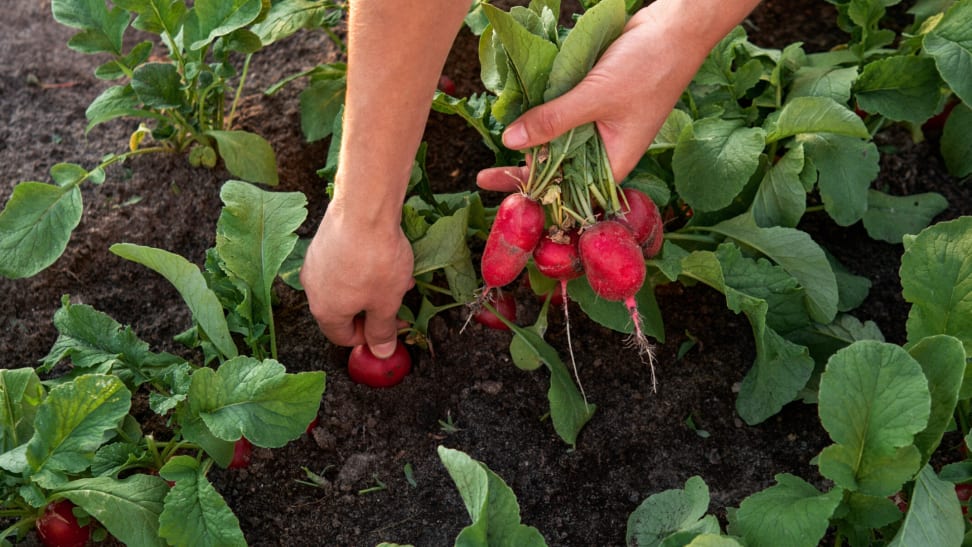 — Recommendations are independently chosen by Reviewed’s editors. Purchases you make through our links may earn us a commission.
— Recommendations are independently chosen by Reviewed’s editors. Purchases you make through our links may earn us a commission.So you’ve planted your peas, tomatoes, zucchini, carrots, or beans, and your garden is off to a great start. Now comes the tricky part: making sure your plants stay healthy and keep growing.
Here are 10 tips to keep your vegetable garden looking great and producing tasty vegetables all season long.
1. Be a plant detective
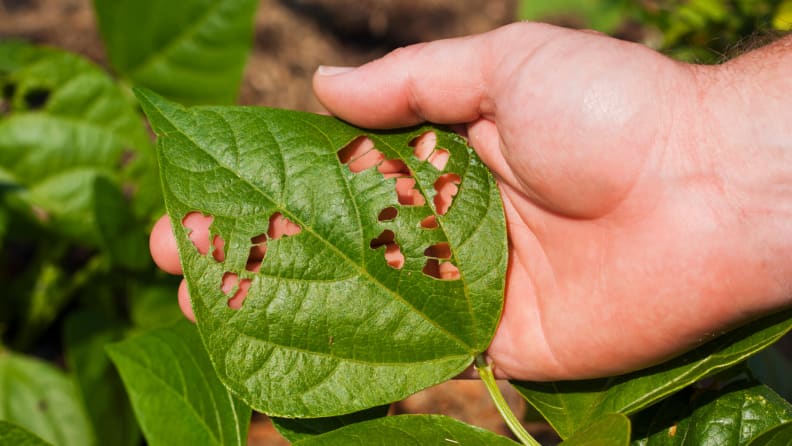
Check leaves for evidence of insect infiltration or disease often so you can catch a problem before it starts.
When you go out into your garden, don’t just admire your plants—take a closer look. A few minutes examining your plants stems and leaves can help you catch plant problems early, before they become disasters.
First, look at the leaves. Make sure you check the undersides of a few leaves as well as the tops. Insects tend to hide underneath leaves. Then, look at the stems, especially where they make contact with the soil, where insects tend to nibble. Different types of root rot or infections from being splashed with rainwater can also appear near the soil.
Examine the buds, flowers, and fruit of your plants as well.
- Do you see any holes or ragged edges? A rabbit, vole, or insects may have gotten to it. If that’s the case, here’s how to handle most types of garden pests.
- Are there any brown, yellow, white, or black spots—and are those spots dry, moist, or fuzzy? Your plant may have a fungal or bacterial disease or a virus.
- Are there any parts of the plant or fruit that are sunken, soft, or discolored? This could be the result of a fungal disease, or poor watering practices in the case of blossom end rot, which affects tomatoes, peppers, cucumbers, and squash.
- Is just one plant affected, or do all the plants of the same species show the same symptoms? If it’s just one plant, you may be looking at insect or rodent damage. If several plants are damaged, it’s more likely to be a disease.
If you see anything odd, check with your local agricultural extension, or look up the symptoms on a plant site. The Plant Problem Diagnostic Tool run by the University of California or the University of Minnesota’s Diagnose a Problem site are two good places to start.
2. Give your plants a pinch
Left to themselves, many types of leafy vegetables and herbs will send up a single stem. That’s great for supporting their flower stalks, but not so good for gardeners who want to eat their leaves. To get more stems—and more leaves!—gardeners “pinch” the main stem, removing the stem back down to the top set of leaves.
When you pinch off the main stem, many plants will send up two new stems, doubling the potential size of your plant. This technique works for Brussels sprouts and many herbs including basil, lavender, oregano, rosemary, sage, tarragon, and thyme.
3. Get rid of that sucker
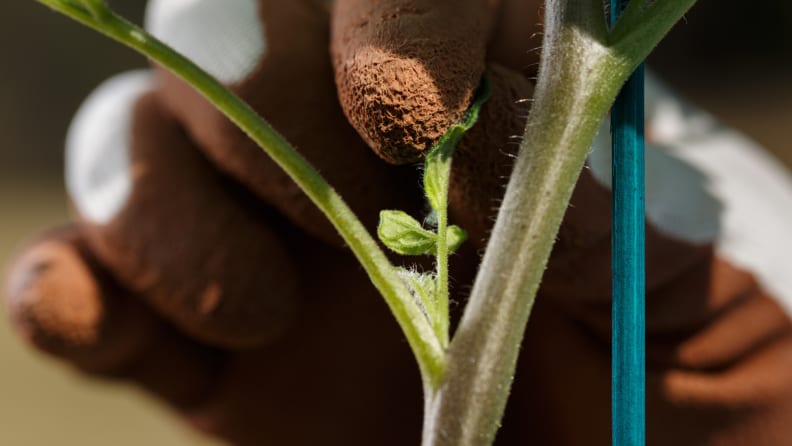
Removing the "sucker" from in between stems can help a plant grow stronger and produce more fruit.
To get the biggest, tastiest tomatoes, you need to remove the “suckers,” the weird in-between stems that grow in-between the main stem of the tomato plant and the side branches. They stick out at 45-degree angles.
The suckers won’t hurt your tomatoes, and they will eventually grow leaves, flowers, and fruit. But they do reduce air circulation, and the amount of light getting to lower leaves, which can make your tomato plants more vulnerable to fungal diseases. Suckers at the bottom of the stem can increase the chance of picking up plant diseases from the surrounding soil, especially if they get splashed during rainstorms.
Having lots of side growth also makes it hard to see any developing problems on your plants, and the more fruit you have on a tomato plant, the smaller each tomato will be. Most gardeners opt to remove the suckers to keep their plants healthy and their beefsteak tomatoes big.
There are two main types of tomatoes: indeterminate, or vining tomatoes; and determinate, or “bush” tomatoes. Most popular backyard tomatoes are indeterminate, meaning they need to be staked to stay upright. These tomatoes need their suckers pinched, while determinate tomatoes do not.
Pinch off your tomato plants’ suckers right at the bottom of the suckers’ stems every week to assure good air circulation and growth. If you wait too long, it can be hard to remove the sucker without stripping tissue from the rest of the plant.
4. Tie them up
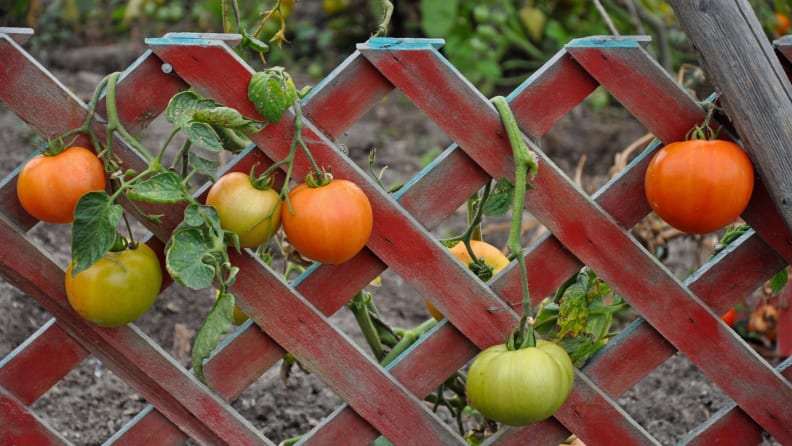
Using a trellis can help keep vegetables off the ground and away from hungry animals.
Sure, all your children’s books show lush pumpkin patches with vines trailing all over the ground, but they don’t show your children and dogs stumbling over the vines and stepping on the squash, or the slugs and beetles that enjoy finding edible vegetables at their level.
If you’re growing any kind of vining vegetable or fruit—squash, pumpkins, cucumbers, or melons—you should be thinking about growing it vertically on a stake, cage, or a trellis like this A-frame trellis. It will save you precious garden ground, prevent the misery of stepping on beloved plants, and it will help reduce insect damage and disease by increasing air circulation.
You don’t have to put up a sky-high trellis to make your plants happier. Use garden stakes and twine to make a basket weave trellis, wrapping the string around your plants in a straight row to keep them upright. It’s a great way to support peppers and tomatoes.
5. Harvest veggies while they’re young
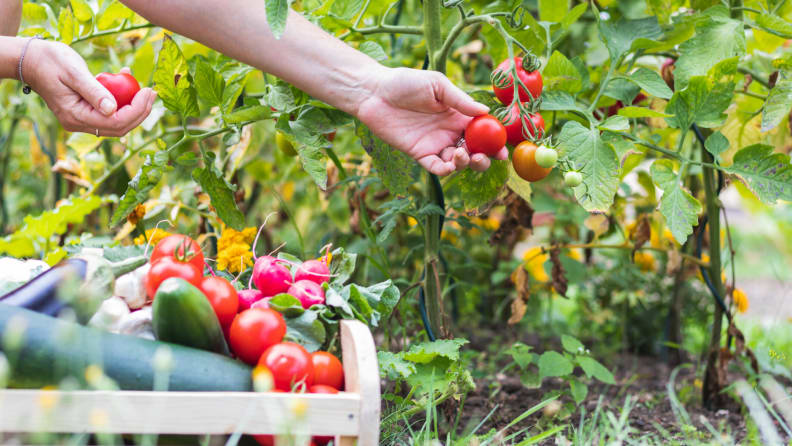
Harvest vegetables when they're just ripe—don't wait until they grow into oversized, flavorless versions of themselves.
For home-grown vegetables, bigger is not better. Baseball-bat-sized zucchini is watery and flavorless, big okra pods are woody, overripe bean pods are stringy. Old veggies don’t taste good, and they’re usually too fibrous and tough to enjoy. They also attract a variety of pests, from squirrels to wasps to ants. Once they’re done eating your overripe veggies, they will often turn to the younger, tender vegetables as their second course.
The solution; Pick your vegetables when they first ripen. The University of Georgia has a helpful guide to when to pick common vegetables, showing when they’re underripe, ripe, and past their prime. Got too many vegetables at once? Share them with your neighbors, or compost them.
For green-colored vegetables—green beans, peppers, and especially zucchini—make sure you check under leaves regularly. It can be easy to miss small specimens that are the same color as leaves until they become behemoths.
6. Make sure they’re getting enough water
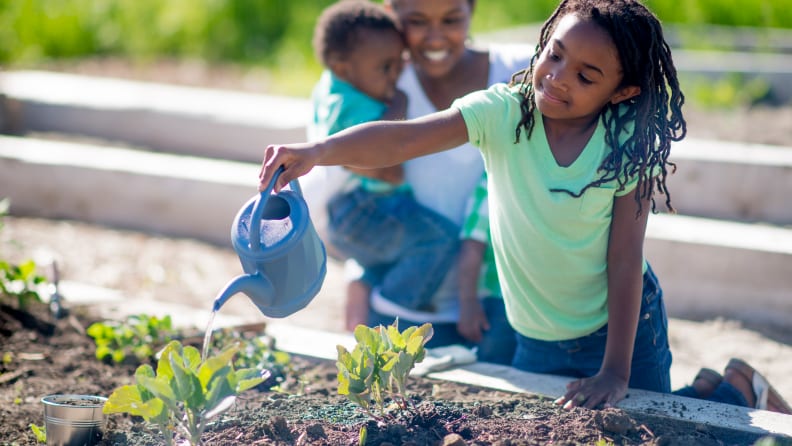
Older kids can be especially helpful in the garden.
Plants need water—and plants that produce juicy fruits, like tomatoes, need a steady supply. Tomatoes that don’t get the equivalent of 1 inch of water a week suffer blossom end rot, which makes beautiful, red, ripe tomatoes melt into brown goo from the bottom up.
Don’t let that happen to your garden. First, use a rain gauge to check how much water you’re getting in your yard. If you’re less than 1 inch of rain a week, you need to water your vegetable plants.
Your plants will be healthier if they get their water in one long, slow session each week instead of daily sprinkles. Lingering moisture on leaves can increase the chances of fungal diseases. Count on running a hose or sprinkler for at least a half-hour at a time to get your plants the water they need, preferably in the early morning so the leaves don’t stay wet overnight. (This is also a great task for getting kids involved in gardening.)
Tired of standing around holding a hose? A hose timer or a smart sprinkler will take that chore off your hands, leaving you more time for weeding. (Or relaxing!)
If you’re using a sprinkler, test your sprinkler's output by putting cat-food or tuna cans across your garden and running the sprinkler for 30 minutes. Measure the number of inches of water in your cans, take the average, and multiply by two to find the number of inches of water per hour that your sprinkler is putting out. Adjust your timing to get that 1 inch per watering session.
7. Feed your plants, but not too much
To grow, plants need nutrients, chemicals and minerals that occur naturally in fertile garden soils. What they don’t need is runoff from the heavy-handed chemical fertilizer that many inexperienced gardeners apply.
Even worse, adding too much chemical fertilizer can damage your plants. Excess nitrogen fertilizer makes plants grow leaves and vines fast, and stop growing flowers, fruit, or roots. Say goodbye to your tomatoes and carrots! Excess phosphorus can make plants’ leaves turn yellow from a syndrome named chlorosis, so they can’t photosynthesize well.
Before you fertilize your plants—preferably before you plant your garden—get your soil tested. For just $10 to $20, you can get tests from your local agricultural extension offices that will tell you what levels of nutrients you have in your soil, and how to correct any deficiencies.
In the meantime, the best thing you can do to make sure that your plants stay healthy is to add compost to your garden. Compost is a mix of decayed plant matter, sometimes mixed with aged manure. You can add it to garden soil, or use it as a mulch or “side-dressing” by simply piling an inch or two of compost on the ground near your plants. Don’t bury your plants’ stems, though, or you’ll invite soil insects to your plants for lunch.
After you get your soil test results back, consider using a slow-release granular fertilizer
that gradually dissolves instead of a powder. Popular brands like Osmocote can feed your plants for the whole growing season.
8. Eliminate the competition
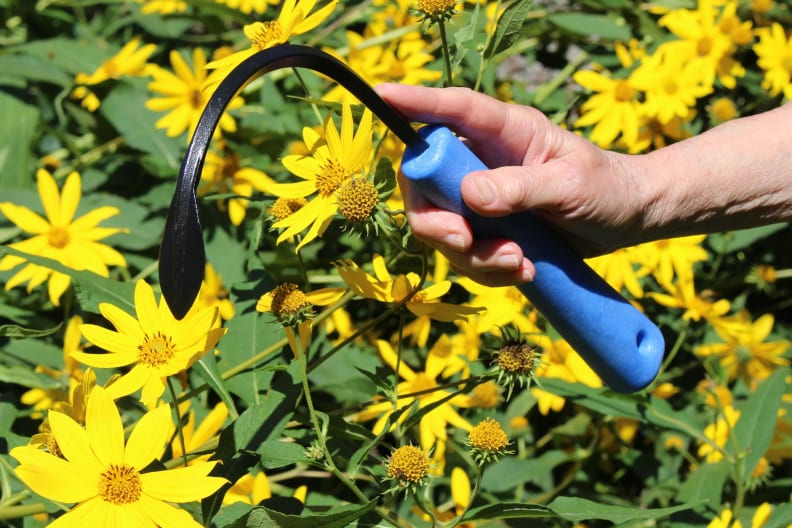
A CobraHead weeder can help remove weeds from your vegetable garden.
Now that all your seeds and plants are in the ground, you may be tempted to stop weeding. Don’t! In the midsummer, when many U.S. gardens get upwards of 16 hours of sunlight a day, little baby weeds can grow to giant, garden-strangling monsters in a week. They will suck water away from your beloved vegetables, shade out their leaves, and spread diseases to your precious garden plants.
If your weeds are still small, you can cut the leaves off from their roots with a Japanese hand hoe or a sturdy garden hoe. If you’ve let a little time go by and you need to get rid of an established plant with sturdy roots, a CobraHead weeder will help you hook under the plant and use leverage to yank it out of the ground.
9. Make room for the new generation
You planted your seeds in a nice straight row, you put your seedlings in carefully and watered them diligently—and now you have a million little plants in your garden. If you want your veggies to grow into mature plants, you will need to remove or “thin” some of your carefully pampered garden plants.
Overcrowding plants is a very common gardening mistake—who doesn’t want more plants?—but it’s still a mistake. All your seed packets and gardening catalogs list recommended spacing for a reason. Overcrowded plants compete for light, space, water, and nutrients. Root crops like radishes, beets, onions, parsnips, and carrots stay thin and spindly when their roots don’t have room to expand.
It may be hard, but pinch or pluck out as many veggies as you must to get your plants to the right spacing for health. Try to remove the stems at the surface so that you don’t damage nearby vegetables’ roots: North Carolina State University recommends using scissors. This root vegetable guide shows spacing for below-ground crops, while the University of Illinois offers a guide to spacing for common garden vegetables.
10. Know when it’s time to let go
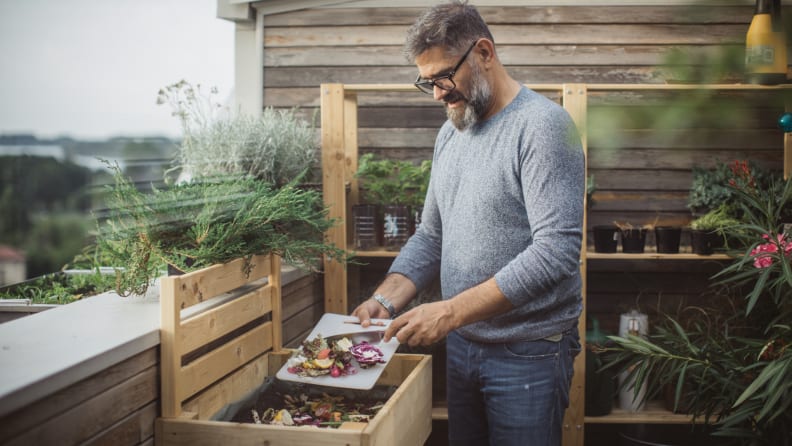
Composting disease-free plants is a great way to create nutrient-rich fertilizer.
Sooner or later, all crops end. If you’re growing cool-season or fast-growing crops like lettuce, spinach, or radishes, sooner or later the plant will go to seed. Dead plants attract live insects.
Remove spent vegetables from your garden as quickly as possible when they’re done producing, or if you realize that you will never, ever, eat that much zucchini. You can compost the plant, but don’t throw it in if it died because of disease since you risk infecting your plants again.
When you open up space, you can plant a second or ”succession” crop if your growing season is long enough.
How about some edible annual flowers? Nasturtiums and Signet marigolds (Tagetes tenuifolia) add spice to a salad and look bright on a plate. After all the work you’ve done, your home-grown vegetables deserve a little decoration.
Related content
-
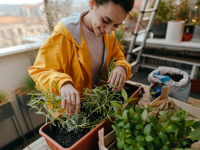
-

The Best Gardening Gloves of 2020best-right-now
The product experts at Reviewed have all your shopping needs covered. Follow Reviewed on Facebook, Twitter, and Instagram for the latest deals, product reviews, and more.
Prices were accurate at the time this article was published but may change over time.


